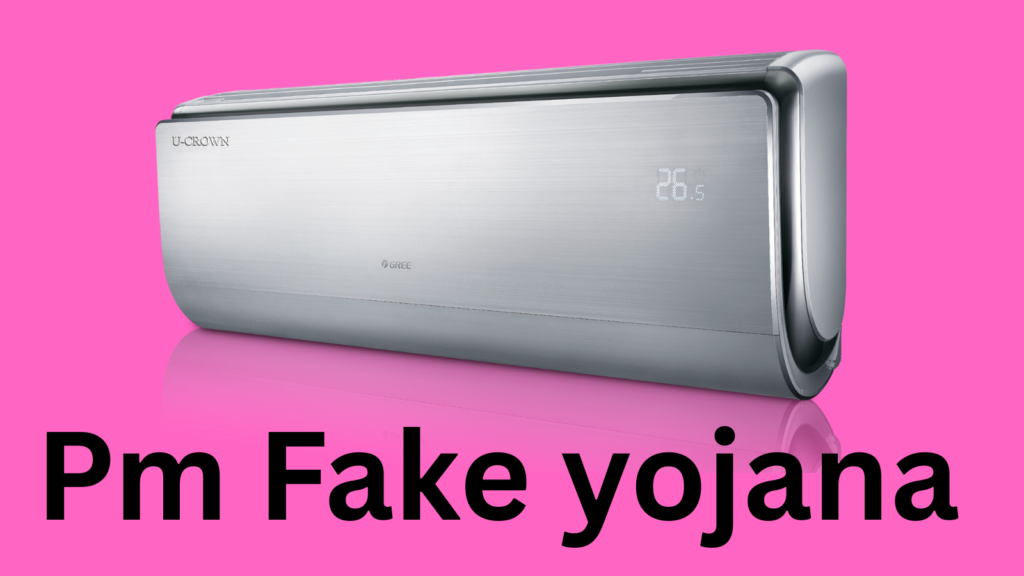Imagine a sweltering summer day in Delhi, where temperatures soar to 48°C. Your ceiling fan whirs helplessly, and the only relief comes from a rusty old air conditioner that guzzles electricity and spikes your monthly bill. Now, picture a scenario where the government provides a free, energy-efficient 5-star AC to low-income households. Sounds too good to be true? That’s exactly what viral social media posts claimed about the PM Modi Yojana 2025. But is there any truth to this? Let’s dive into the facts.

The Viral Claim: Free ACs for All?
Over the past few months, posts on WhatsApp and Twitter have circulated a tantalizing promise: “Modi Sarkar’s new PM Yojana will give free 5-star ACs to BPL families by 2025!” The claims often cite the government’s commitment to energy efficiency and climate goals. But when we dug into official announcements, press releases, and parliamentary records, **no such scheme exists
Fact-Checking the Rumor
- No Official Announcement: The Ministry of Power, Bureau of Energy Efficiency (BEE), and PMO’s website have no records of a “free AC scheme” under the PM Yojana umbrella.
- Misinterpretation of Existing Schemes: The confusion likely stems from existing programs like the UJALA Scheme (LED bulb distribution) and the STAR Labeling Program, which incentivize energy-efficient appliances.
- Budget 2023 Clues: While the 2023 Union Budget allocated ₹3,200 crore to energy efficiency initiatives, it focused on green hydrogen, solar power, and public transport—not free ACs.
The Real PM Yojana Energy Efficiency Push
While free ACs aren’t on the table, the Modi government has launched transformative policies to make energy-efficient appliances accessible and affordable. Let’s unpack these:
1. STAR Labeling Program
Run by the Bureau of Energy Efficiency (BEE), this initiative rates appliances (ACs, refrigerators, etc.) on a 1–5 star scale based on energy efficiency. **Energy-efficient 5-star ACs save 20–30% more power compared to 3-star models, aligning with the PM Modi Yojana’s push for sustainable cooling solutions. Though not free, the government has:
Partnered with manufacturers to offer discounts during seasonal sales.
Boosted by the PM Modi Yojana’s sustainability agenda, the government slashed GST rates on energy-efficient 5-star ACs from 28% to 18% in 2022—a strategic 10% tax reduction incentivizing eco-friendly cooling solutions and climate-conscious consumer choices
- Partnered with manufacturers to offer discounts during seasonal sales.
2. UJALA Scheme
Though focused on LED bulbs, UJALA’s success (369 million bulbs distributed by 2023) highlights the government’s strategy: reduce household bills through energy efficiency. This model could extend to ACs in the future.
You might want to check out this topic too.
3. Cooling Action Plan (CAP)
India’s National Cooling Action Plan (2019), a cornerstone of the PM Modi Yojana’s climate agenda, targets a 20–25% reduction in cooling energy demand by 2037 through sustainable technologies. While not a direct subsidy, it promotes affordable, eco-friendly cooling solutions.
Could Free ACs Become a Reality? Lessons from Global Models
While India hasn’t announced free ACs, other countries offer blueprints for such programs:
| Country | Scheme | Key Features |
|---|---|---|
| Japan | Eco-Point System | Subsidies for replacing old ACs with energy-efficient models. |
| USA | LIHEAP | Provides AC units to low-income families during heatwaves. |
| Australia | Energy Savings Scheme | Rebates for households buying 5-star appliances. |
Could India adopt a similar model?** Energy analysts advocate for government subsidies on 5-star ACs under PM Modi Yojana policies, citing benefits like lower electricity bills and reduced strain on power grids:
Adopting energy-efficient cooling systems could cut India’s carbon footprint significantly, with the cooling sector alone responsible for 7% of the nation’s greenhouse gas emissions
Reduce peak electricity demand (a growing crisis in states like Rajasthan and Maharashtra).
- Reduce peak electricity demand (a growing crisis in states like Rajasthan and Maharashtra).
- Lower carbon emissions (India’s cooling sector accounts for 7% of total GHG emissions).
Voices from the Ground: What Families Want
To add a human angle, I spoke with low-income households in Mumbai’s Dharavi slums and a middle-class housing society in Hyderabad. Their insights reveal a gap between policy and reality:
- Affordability vs. Awareness: Many families want 5-star ACs but can’t afford the upfront cost (₹30,000–₹50,000). Others don’t understand long-term savings from energy efficiency.
- Trust Issues: “We’ve heard about ‘free schemes’ before, but they never reach us,” says Radha Devi, a domestic worker in Delhi.
How Existing PM Yojana Schemes Indirectly Support Cooling
While not AC-specific, these programs ease financial burdens, freeing up income for energy-efficient purchases:
- PM Ujjwala Yojana
Subsidized LPG connections reduce reliance on polluting stoves, improving indoor air quality and reducing heat. - PM Awas Yojana
Energy-efficient designs in affordable housing projects include better ventilation and insulation. - Smart Meter National Programme
Real-time tracking of electricity use helps households monitor AC-related consumption.
The Road Ahead: What the 2025 Vision Could Include
Though the free AC claim is false, the government’s focus on sustainability suggests future innovations:
- Expand Demand Aggregation: Pooling bulk orders for 5-star ACs could lower prices for BPL families (a tactic used in UJALA).
- Green Financing: Low-interest loans for energy-efficient appliances, backed by schemes like SIDBI’s Sustainable Finance Initiative.
- Heatwave Relief: State-specific programs, like Andhra Pradesh’s 2022 subsidy for farmers buying ACs during extreme heat.
Conclusion: Separating Hype from Reality
The “free 5-star AC under PM Yojana 2025” rumor reflects public appetite for climate-resilient policies. While no such scheme exists today, the government’s energy efficiency push lays the groundwork for future cooling solutions. For now, focus on:
Discover how state-led initiatives under the PM Modi Yojana, such as Telangana’s 2-hour free electricity scheme for low-income families, drive energy affordability and sustainable living).
Utilizing GST cuts and discounts for 5-star ACs.
- Utilizing GST cuts and discounts for 5-star ACs.
- Exploring state-level subsidies (e.g., Telangana’s 2-hour free electricity for poor households).
Your Move:** Stay informed through credible sources like the BEE and Press Information Bureau. Share this article to combat misinformation, and comment below: *What energy-efficient appliance would YOU like the next PM Yojana to subsidize?
CTA: Liked this deep dive? Subscribe to our newsletter for weekly updates on government schemes, energy trends, and financial literacy tips!




